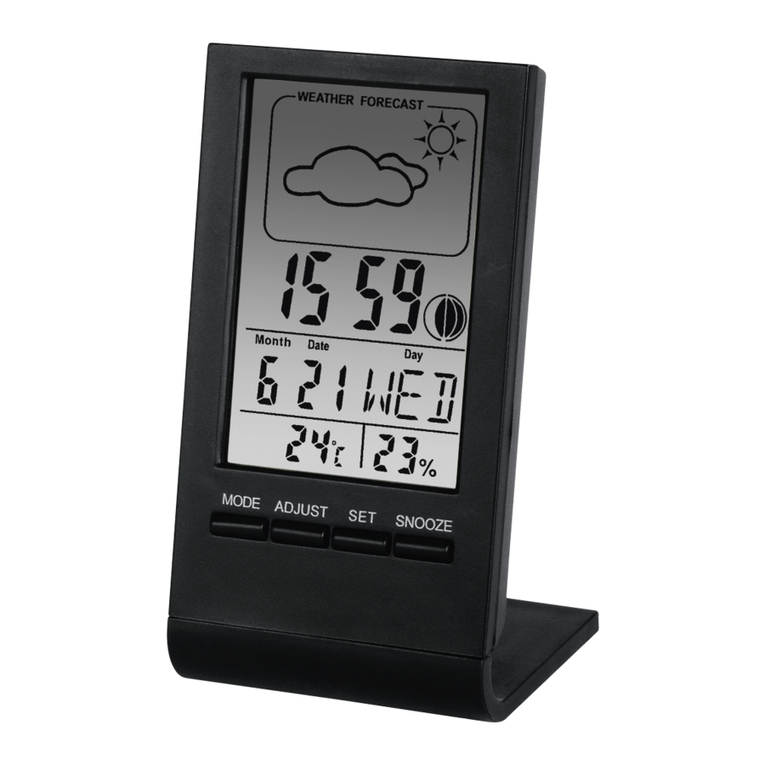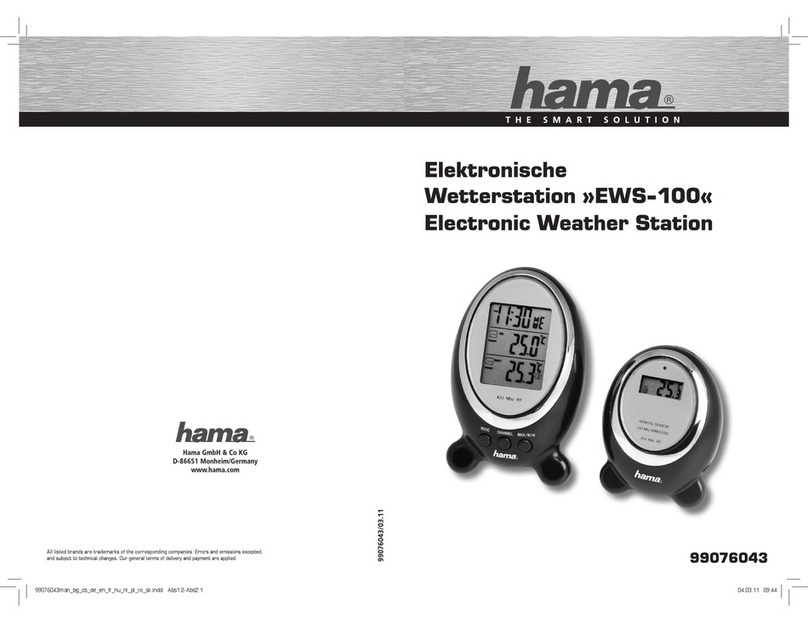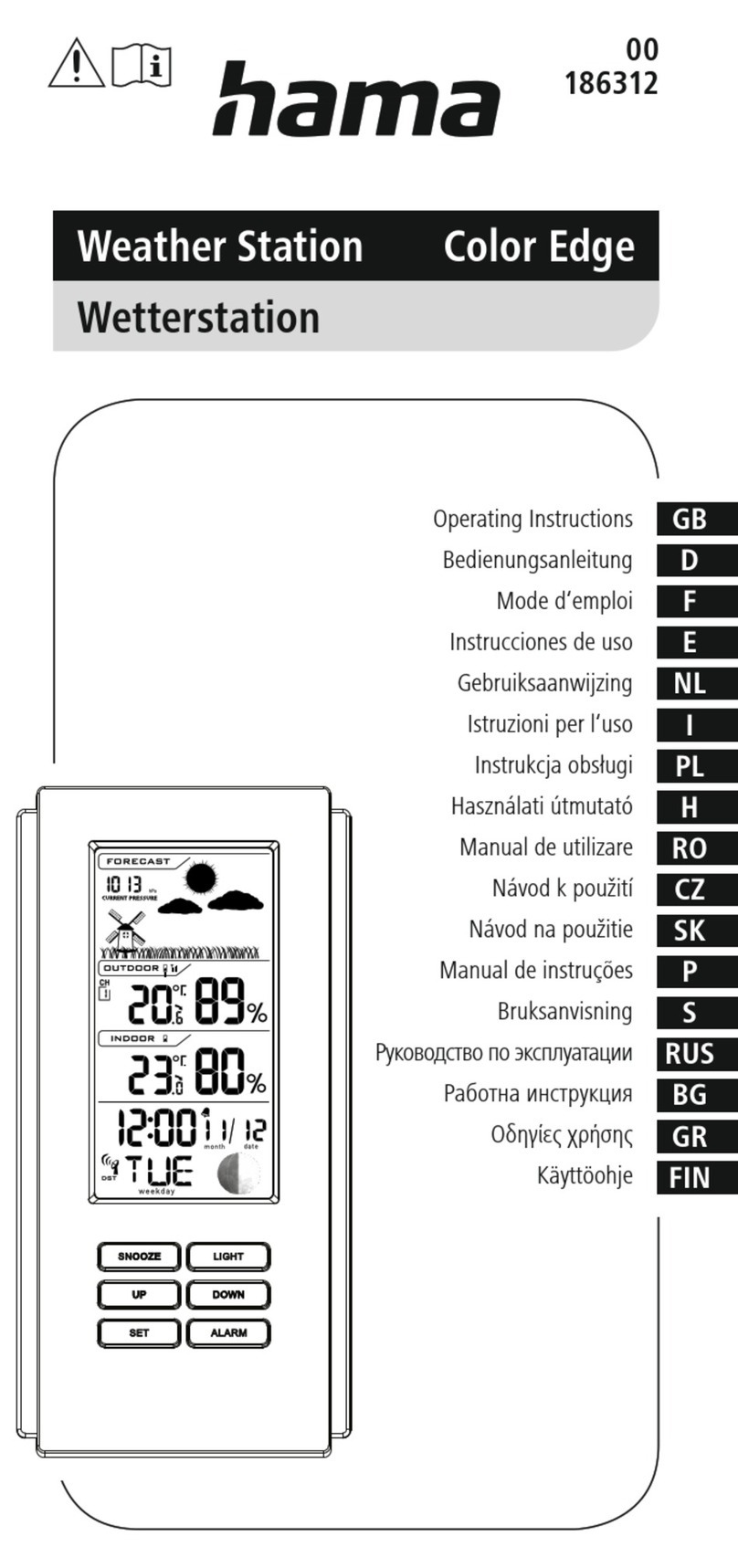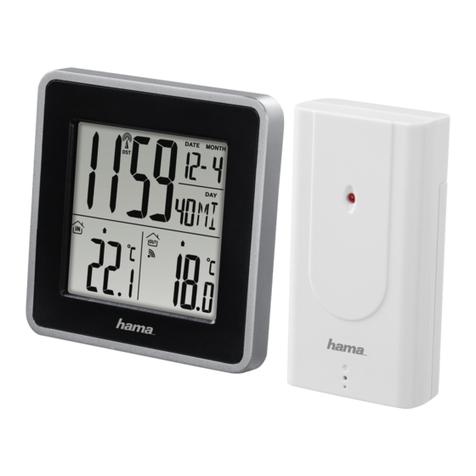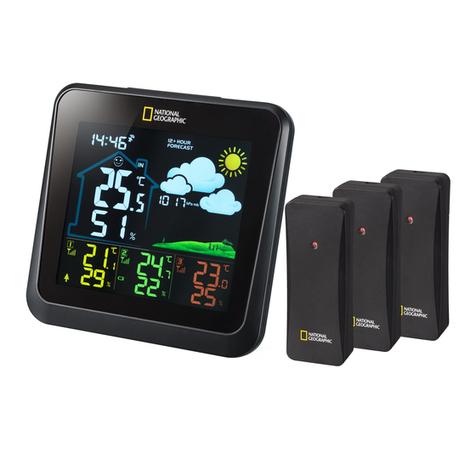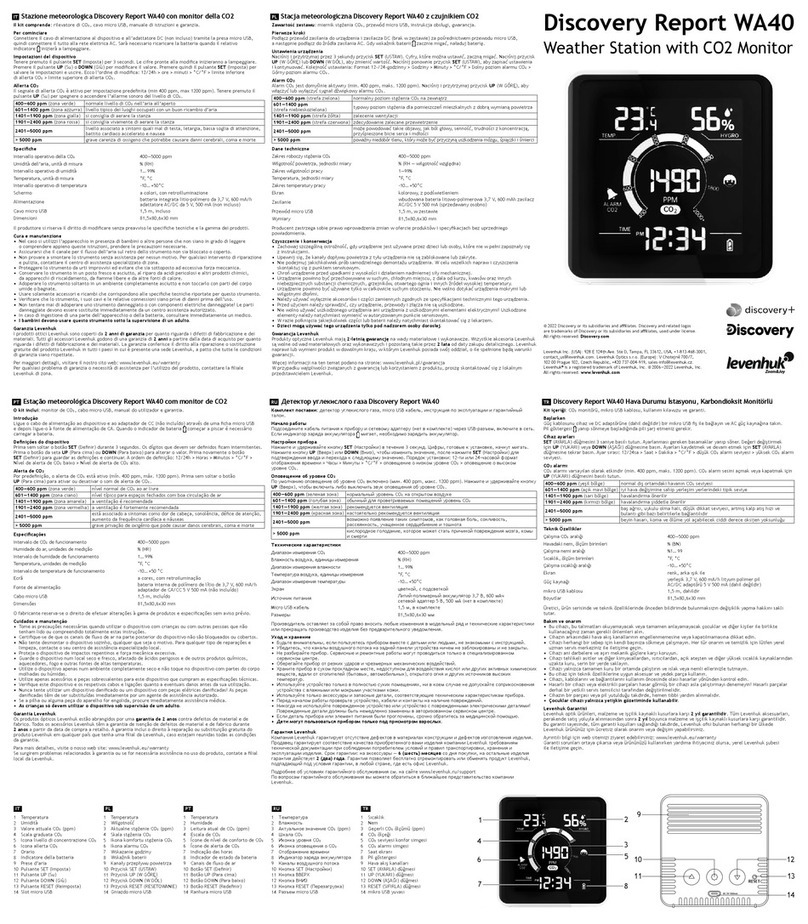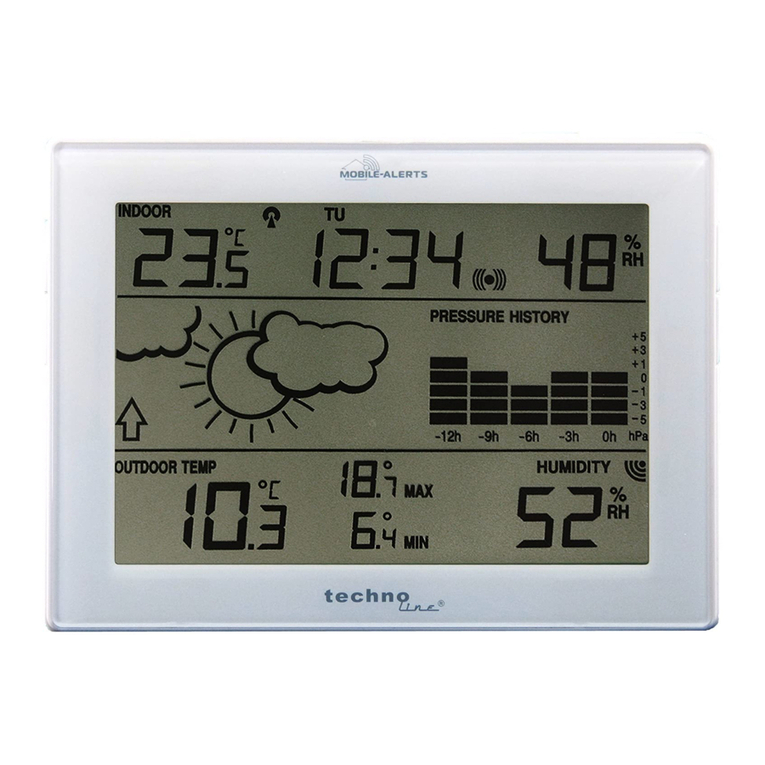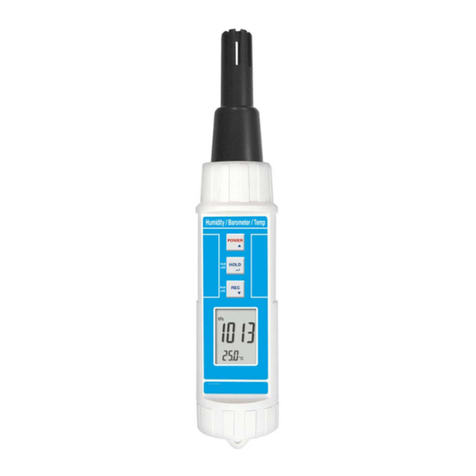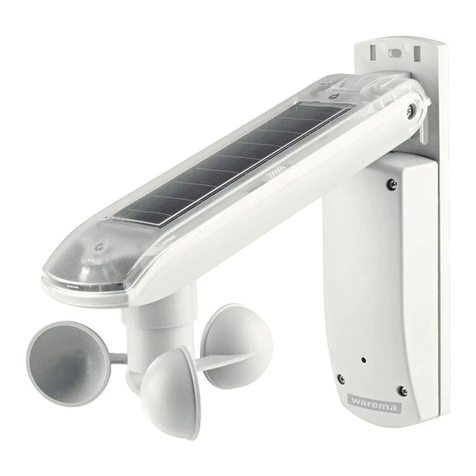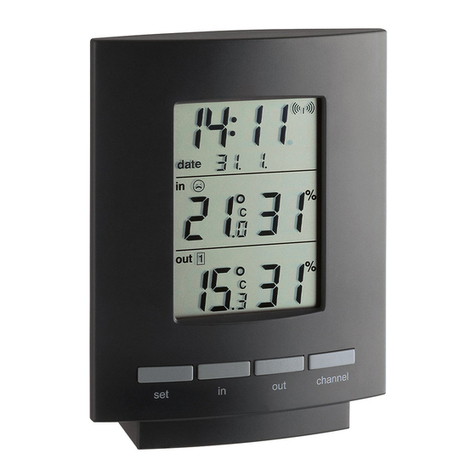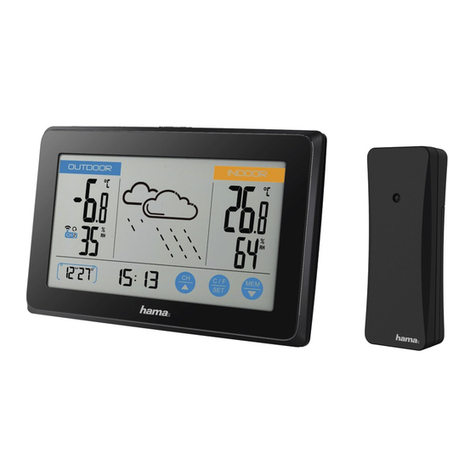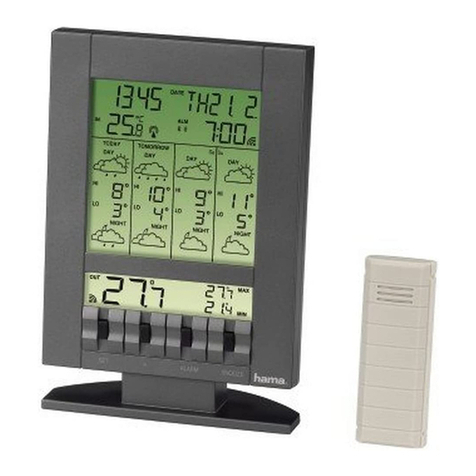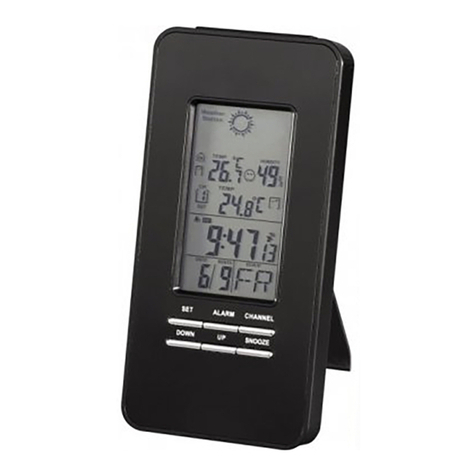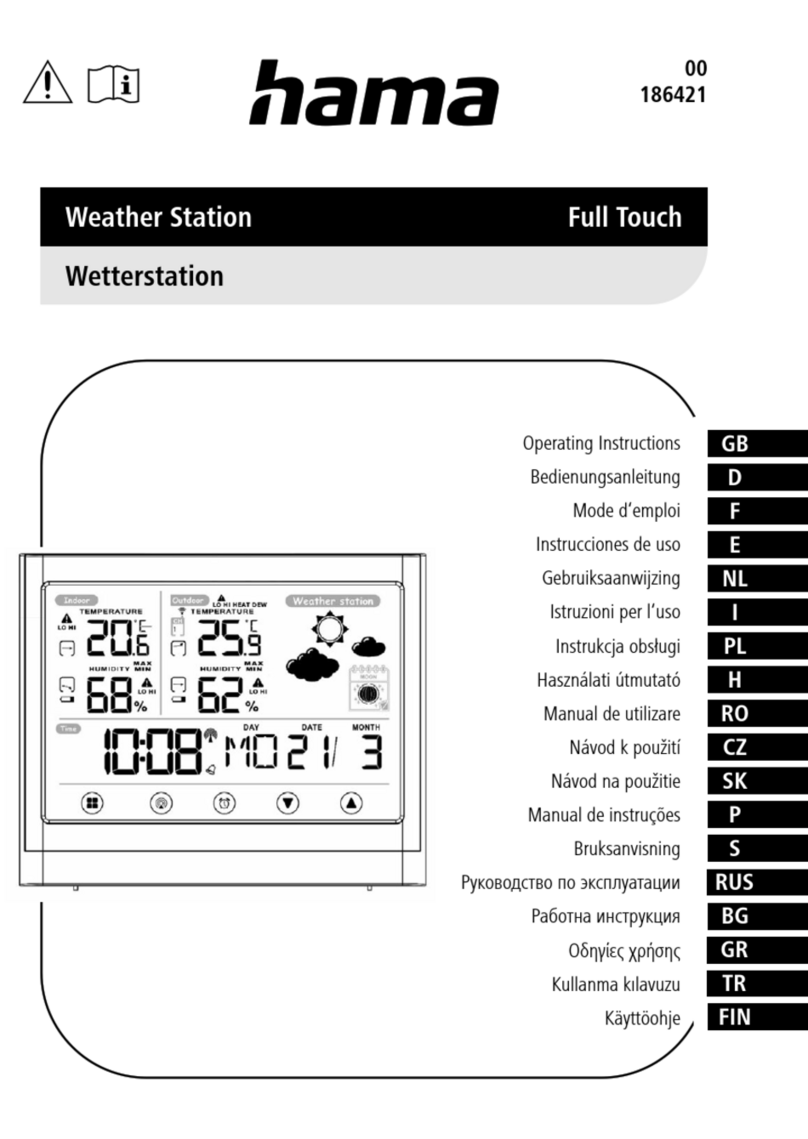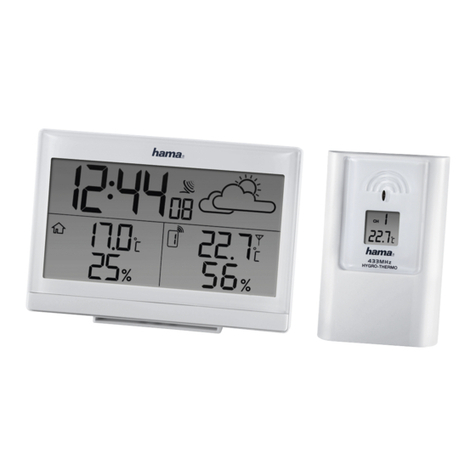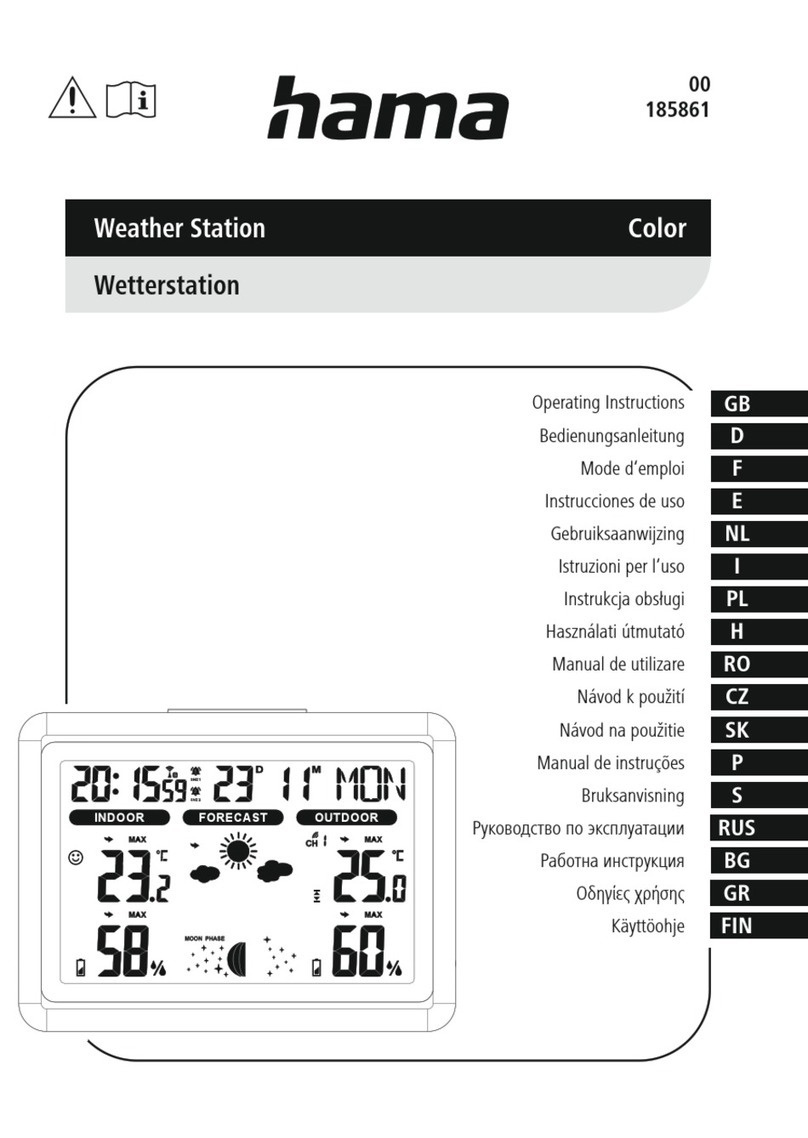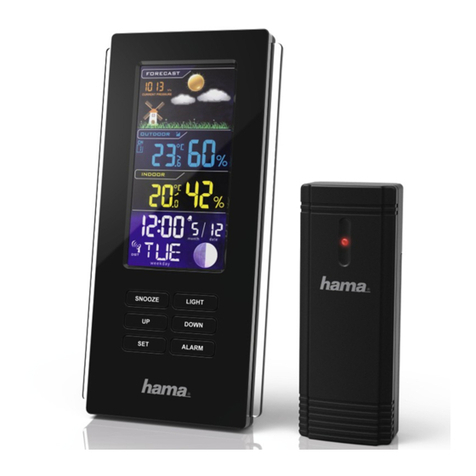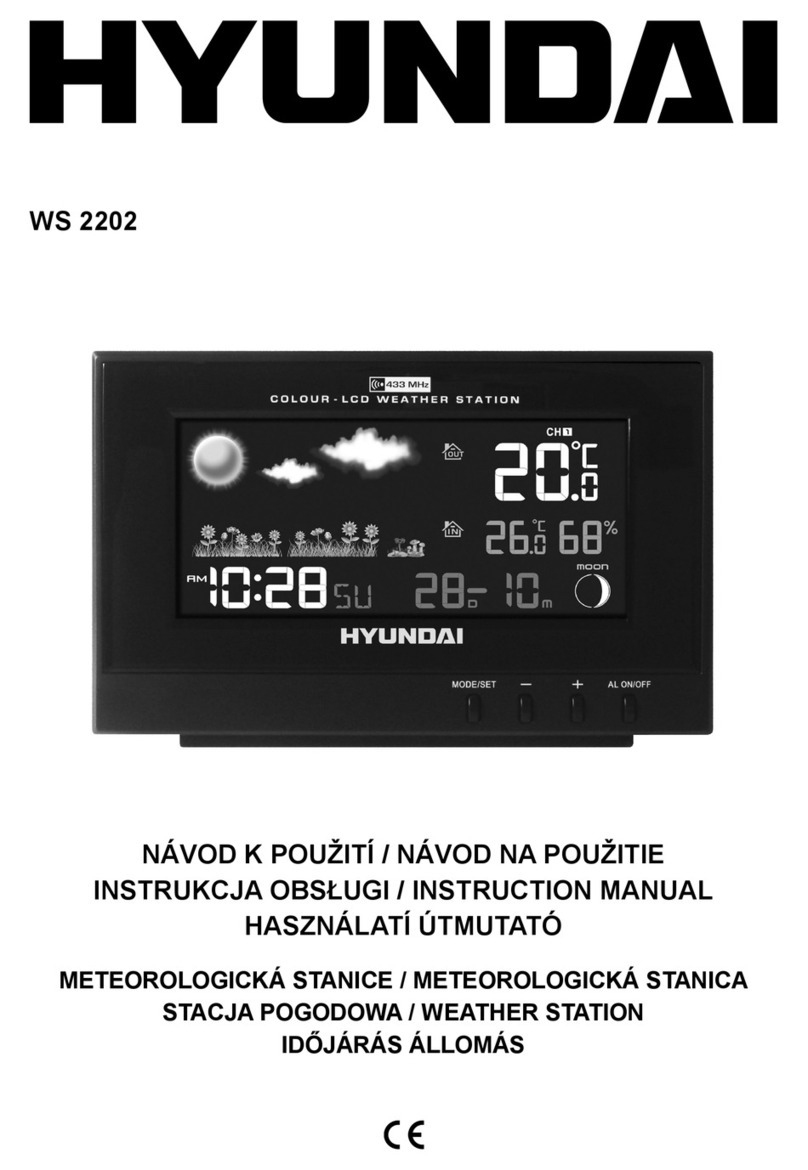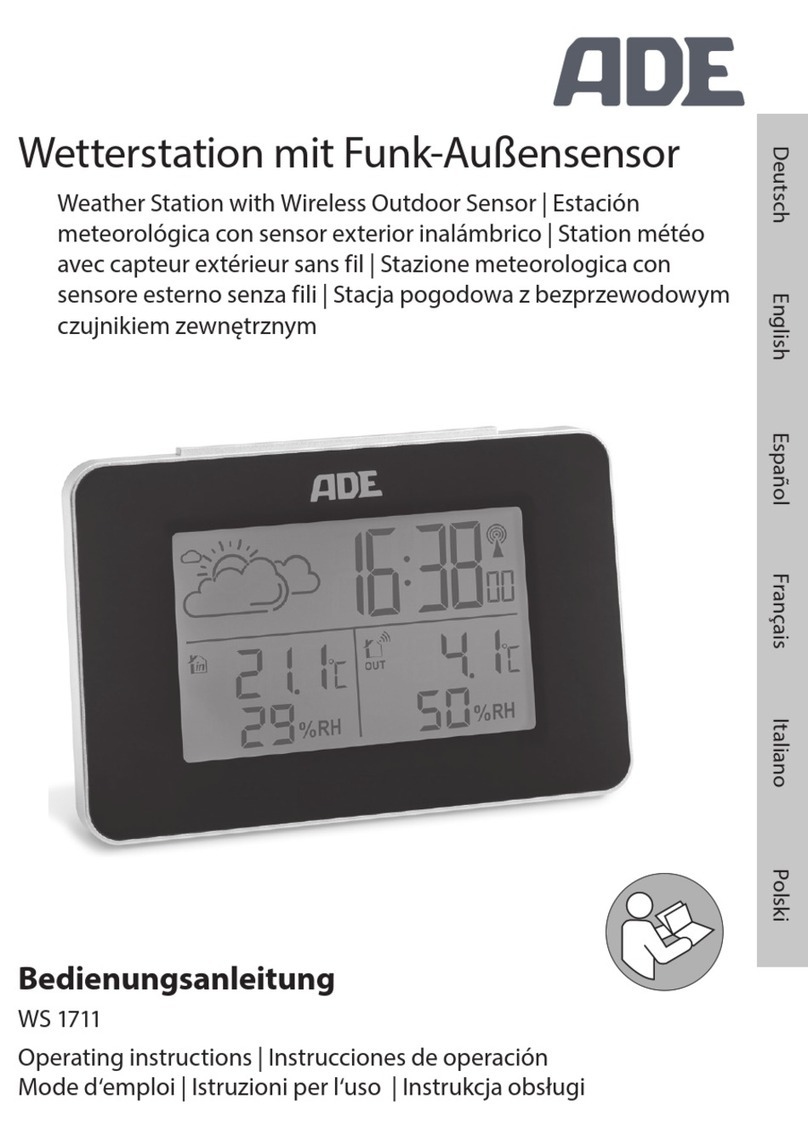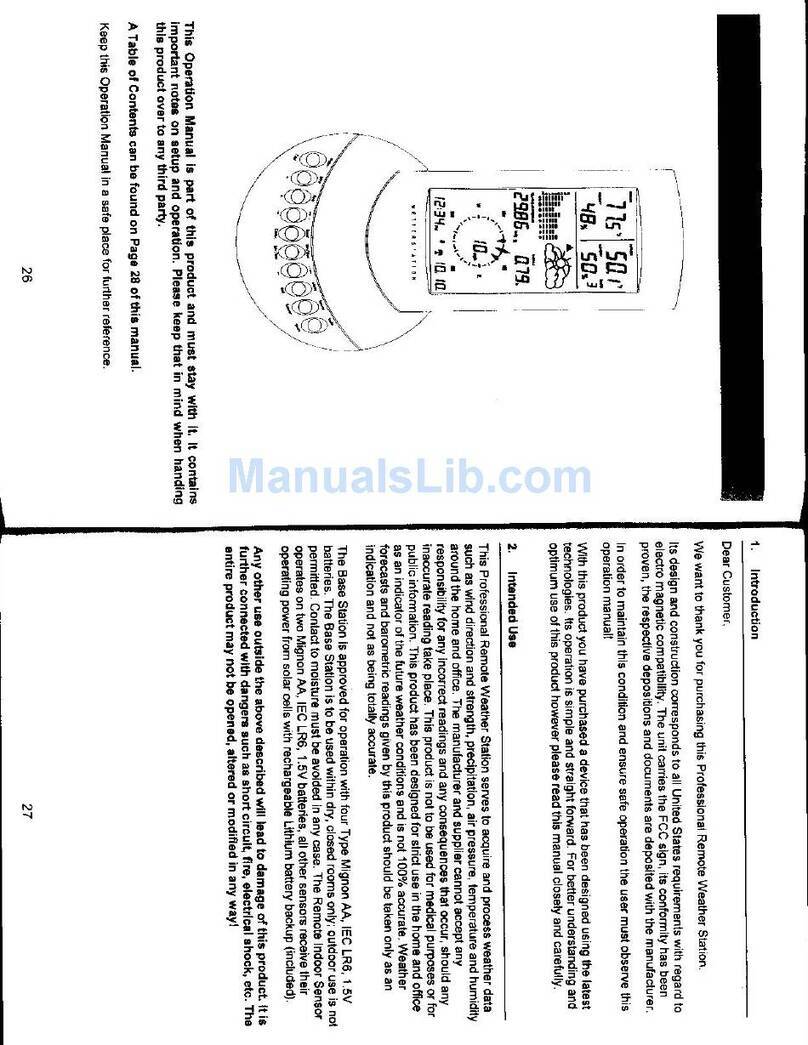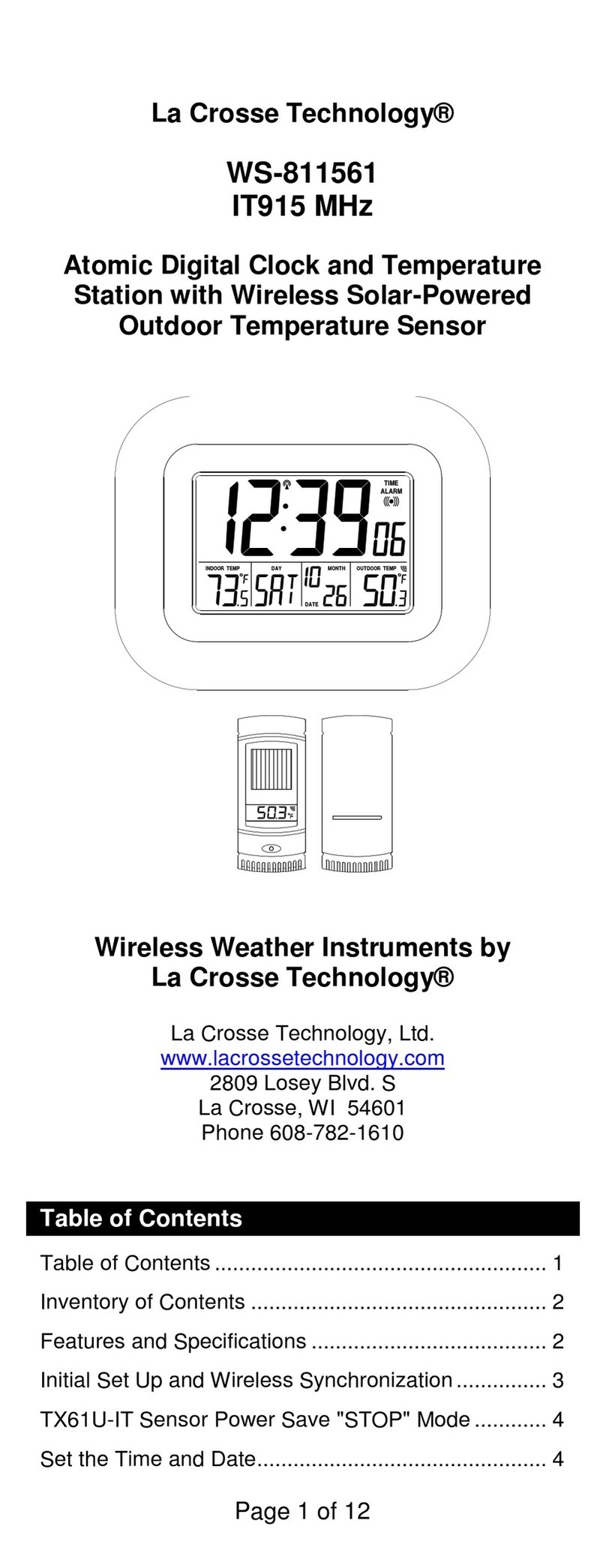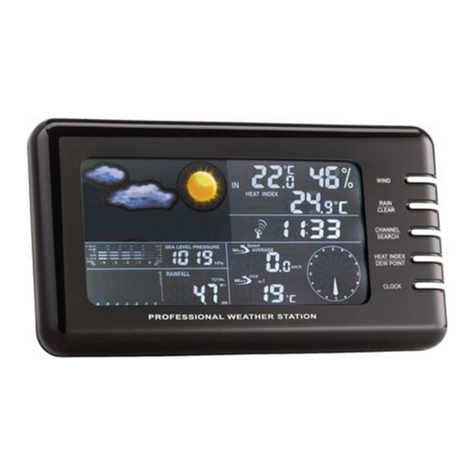5
•If the station still does not receive a signal, press and
hold the – button (23) for approx. 3 seconds to start the
manual search for the DCF signal. The radio symbol (14)
will start to ash.
Note – Time settings
•The search process takes about 7 minutes. If the search
fails, it ends and is repeated at the next clock hour.
The radio symbol (14) goes out.
•In the meantime you can, however, set the time and
the date manually.
•The clock automatically continues to search for the
DCF signal on a daily basis (between 1:00 a.m. and
5:00 a.m.) to correct any deviations. If the signal is
received successfully, the manually set time and date
are overwritten.
•Press and hold the –button (23) again for approx. 3
seconds to stop the manual search.
Note – Summer time
The clock automatically switches to summer time.
DST
appears on the display as long as summer time is
activated.
(Manual) settings
•Press and hold the –button (23) for approx. 3 seconds to
stop the search for the DCF signal. The wireless symbol (8)
goes out and you can set the time manually.
•Press and hold the MODE button (20) for approx. 3
seconds to make the following settings one after the other:
•12/24 hour format
•Time zone
•Hours (12)
•Minutes (12)
•Year
•Month (8)
•Day (7)
•Weekday (10)
•To select the individual values, press the +button (22) or
the –button (23) and conrm each selection by pressing
the MODE button (20).
•Press the MODE button (20) immediately to adopt the set
value displayed and to skip onwards.
•If you do not make an entry for 20 seconds, you
automatically exit setup mode.
Note – Time zone
•The DCF signal can be received over long distances,
but always transmits the current Central European Time
in Germany. Make sure you set the time difference in
countries with another time zone.
•If you are in Moscow, for example, the time is 3 hours
later than in Germany. This means that you should set
+3 for the time zone. The clock then automatically sets
the time to 3 hours after the DCF signal received or
relative to the manually set time.
Note – Weekday
You can choose from German (GE), English (EN), Danish
(DA), Dutch (DU), Italian (IT), Spanish (SP) and French
(FR) for the weekday display.
Celsius/Fahrenheit
Press the –button (23) to switch between °C and °F for the
temperature display.
Alarm
Note – Alarm
•When activated, alarm mode 1 only triggers an alarm
signal on weekdays (Monday to Friday).
•When activated, alarm mode 2 only triggers an alarm
signal on Saturday and Sunday.
The A1 or A2 alarm symbol will appear in the seconds
position of the time display during setting.
•Press the ALARM button (21) once or twice to display
alarm A1 or A2.
•Press and hold the ALARM button (21) for approx. 3
seconds to set the time of the alarm displayed. The hours
display begins to ash.
•Press the +button (22) or the –button (23) to select the
hour for the alarm time and conrm your selection by
pressing the ALARM button (21). The minutes display
begins to ash.
•Repeat the process to set the minutes for the alarm time.
•If no entry is made for 20 seconds, setup mode
automatically exits.
•To select and activate or deactivate the appropriate alarm,
press the ALARM button (20) repeatedly to select A1 or A2.


